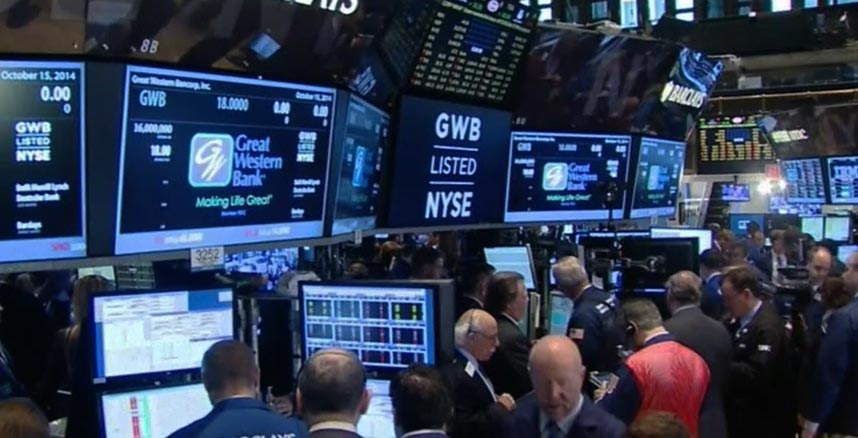Editor’s note: The Federal Reserve’s policy-setting committee raised its target interest rate a quarter-point to a range of 0.5 percent to 0.75 percent, only the second such move in eight years. In the widely anticipated decision, the Fed signaled it anticipates raising rates another 0.75 percentage point in 2017 – likely in three quarter-point hikes – a faster pace of tightening than previously expected. We asked two experts to analyze what this will mean for the not too distant future.
Between a rate hike and a hard place
Steven Pressman, Colorado State University
As almost everyone expected, the Fed raised interest rates, and banks will now pass their higher costs on to companies and consumers, leading to higher borrowing rates throughout the economy.
The bigger issue, however, concerns likely increases in 2017. Here the message was somewhat ambiguous. While indicating that three 0.25 percentage point increases were possible in 2017, compared with the previous guidance that only two rate hikes were likely next year, Janet Yellen stressed in her press conference that any changes would be small and remain highly uncertain. She continually noted that the Federal Reserve would have to adjust its thinking in 2017 based on actual economic circumstances.
The Federal Open Market Committee press release was likewise rather ambiguous. It indicated that monetary policy “remains accommodative” and that future adjustments will depend on the “economic outlook” and “incoming data.”
The important takeaway from all this is that it is really not clear what the Fed will do next year. The reason for this is that the Fed is damned if they raise interest rates considerably in 2017 and damned if they don’t.
On the one hand, debt remains a Damocles sword hanging over the U.S. economy, and a rise in rates could cut the thread. Household debt is approaching levels reached before the 2008 financial crisis, which suggests that households may be approaching the point at which they cannot repay their loans – something that can bring down banks and the U.S. economy. And real median household income remains US$1,000 below pre-Great Recession levels and $1,500 below its all-time peak in the 1990s. U.S. households, responsible for 70 percent of all spending in our economy, face a double squeeze that cannot continue.
Worse still, many households remain underwater on their mortgages. Others are slightly above water, unable to come up with the realtor commissions and moving expenses that would let them sell their home and find a more affordable place to live. Higher interest rates will worsen this problem by reducing home affordability and prices.
On the other hand, at some point, perhaps soon, the U.S. economy will enter another recession. If the tax cuts and spending increases proposed by President-elect Trump get enacted, a ballooning budget deficit (made worse by the onset of a recession) will hinder the ability of fiscal policy to create jobs. Interest rate cuts then become our only viable policy tool.
So with rates already near zero, central banks cannot lower them very much. For this reason, they want to load up on ammunition, and push them up some. At the same, time they fear the consequences of doing this. Today’s Fed guidance was ambiguous for a good reason – they are caught on the horns of a nasty dilemma.
How higher rates will hurt Mexico and tie up Trump
Wesley Widmaier, Griffith University
Donald Trump has promised to build a wall and make Mexico pay. But the Fed’s decision to continue raising rates higher – known as tighter monetary policy – may push Trump to send money abroad, even to Mexico, a common target of his scorn on the campaign trail.
History shows that monetary policy decisions can have complex effects.
With a U.S. recovery continuing, the Fed’s tightening is raising fears of a reaction similar to the 1994 Mexican peso crisis. If this happens, the Trump administration may face hard choices.
Just like today, early 1994 saw then-Fed Chair Alan Greenspan move from an easy money stance and resume raising rates. Greenspan argued that the stock market was flirting with a bubble, bank earnings were low and inflation might revive. Raising interest rates was seen as the solution to ease the market bubble, pull money back from emerging markets and tamp down on a return of inflation.
However, the Fed’s moves back then had unexpected effects. Like many middle-income countries today, Mexico had issued dollar-denominated tesobonos to insure against exchange rate risk. But as the Fed raised rates over 1994, Mexico found it harder to make payments on the bonds, prompting a run on the peso.
The U.S. responded with a $50 billion rescue. Dollars had to flow south – or a Mexican collapse might send immigrants north.
Of course, this is not a dynamic unique to Mexico. As Fed moves raise the cost of servicing dollar-denominated debts, increased debt-servicing costs could have global repercussions.
However, Mexico’s economy has been a subject of some recent concern. If Fed restraint heightens those concerns, Trump may need to forget the wall – and pay Mexico instead.

